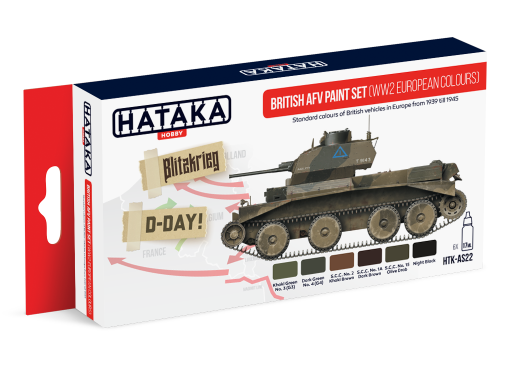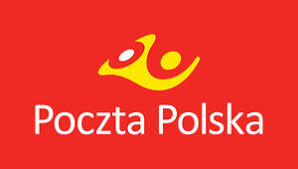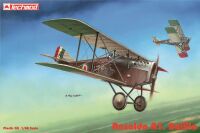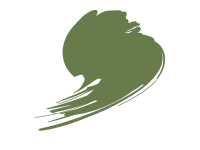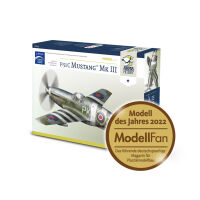HTK-AS22 British AFV paint set WW2 European colours set of 6 x 17ml
- HTK-AS22
- Manufacturer: Hataka Hobby
-
Availability:
In Stock
- Type: Model paint set
- Medium: acryl
- Size/volume: 6 x 17ml
Set contains WW2 colours providing for the first time comprehensive and reliable range of colours for British AFV modellers.
HTK-AS22 “British AFV paint set (WW2 European colours)”
During WW2 British Army military vehicles in European Theatre were painted according to Army Council Instructions and Military Training Pamphlets. Generally two-green colors camo (G4 over G3) and then two-brown colors camo (S.C.C. 1A over S.C.C. 2, result of shortage of ingredients used for green colours) were most commonly used from 1939 till 1943. In October 1943 a blue-black colour (S.C.C. 14) was approved as a main shade over S.C.C. 2. From April 1944 S.C.C. 15 became the last war-time base colour of British tanks.
HTK-AS22 set contains all colours needed to paint model with the above mentioned shades, providing for the first time comprehensive and reliable range of colours for British AFV modellers.
The set contains following colours:
HTK-A064 - Khaki Green No. 3 (G3) - No. 3 B.S.381-1939. Also known as "Service Colour". Base colour of British AFV between 1939-41. Also overall colour of some vehicles
HTK-A075 - Dark Green No. 4 (G4) - No. 4 B.S.381-1939. Used as a darker shade in disruptive patterns of British AFV between 1939-41
HTK-A076 - S.C.C. No. 2 Khaki Brown - No. 2 B.S.987C-1942. Also known as "Service Drab". Base Colour of British AFV between 1941-44 (occasionally seen till 1945)
HTK-A077 – S.C.C. No. 1A Dark Brown - No. 1A B.S.987C-1942. Used as a darker shade in disruptive patterns between 1941-43 (incl. "Mickey Mouse" pattern)
HTK-A110 - S.C.C. No. 15 Olive Drab - No. 15 B.S.987C-1942. Base colour of British AFV in Europe from April 1944 till end of WW2
HTK-A041 - Night Black - S.C.C. No. 14. Used as a darker shade in disruptive patterns between 1943-45 (firstly over S.C.C. No. 2, then S.C.C. No. 15)

